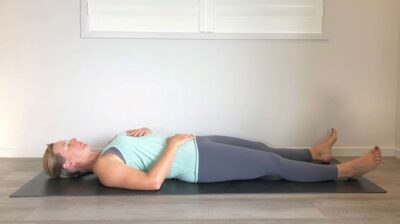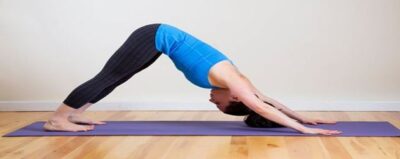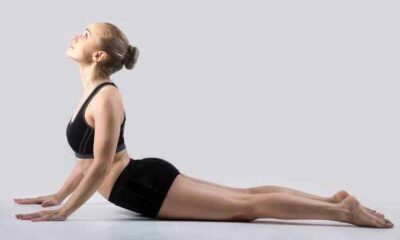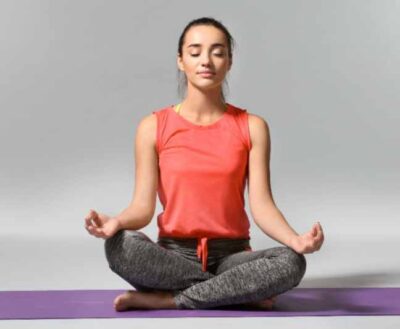Table of Contents
BEST HOT POSES OF YOGA FOR BEGINNERS AT HOME:
When new to Yoga, you may feel overwhelmed by the multiple poses and their strange names. Relax-Your yoga practice is a journey of a lifetime, which allows you plenty of time to learn many postures.
As you progress, you can cope with more challenging situations, but it is best to keep it simple at the beginning. The basic poses of yoga for beginners shown here are sufficient to keep you busy for a long time.
It is quite difficult to narrow everything down because there are more than 300 postures in physical yoga practices, but these postures can guide you to the right track. Every time you do it, breaths 5-10 times, it can help you to create a great beginner yoga program while doing it.
To begin, it is a good idea to remember the following points:
- If you have a chronic medical history or are recovering, please consult your doctor before starting the procedure. Tell your yoga teacher any pain or injury.
- Focus on breathing from the beginning.
- The benefits of yoga will gradually emerge. Practice regularly and don’t give up because you won’t touch your fingers at first.
- Don’t be discouraged by the initial lack of flexibility or strength, which will improve over time.
- Understand that everyone is unique. Everyone’s strength, endurance, and flexibility are different. Your lifestyle and goals may also be different. These styles of yoga for beginners. you can find a yoga style that suits you.
Here are some basic poses of yoga for beginners that can help you get started:
Note: You should not perform all these poses as in the photo-always listen to the body and modify if necessary.
1. Deep Breath:

There is a proverb: “Breathing is life; if you breathe properly, you will live on Earth for a long time.” Whether you use abdominal breathing, deep ribs, or certain techniques of Pranayama – research shows that deep, slow breathing causes a “relaxed response”, slowed heart rate and respiration, lower blood pressure, ease of digestion, energy improvement, less stress, and pain. Regardless of the injury, age, range of movement, or physical strength, this tool is suitable for everyone.
2. Gentle Flow:

Moving your wrists and ankles, bending your fingers and pointing your toes, windshield wiping your knees, the Cat / Cow – these gentle movements don’t look elegant, but they can help you associate the breathing rhythm with self-stimulation that gently stimulates the body’s blood and lymph flow and warms and moves your joints. Flows like water can also help relieve muscle and mental stress and free us from stagnation and stiffness.
3. Mountain Pose:

Mountain Pose forms the basis of all standing positions; it allows you to understand how to walk and feel the ground under you. The mountain pose may seem to be “simply standing,” but there are still many things. First, start standing with your feet together.
Spread the ten toes and press them. Join the quadriceps muscles, lift the knees, and lift the thighs. Pull the abdomen up as you lift the chest and press down the top of the shoulders.
Feel your shoulders to the bones close together and open the chest, keeping the palm facing towards the body. Hold for 5-8 breaths.
4. Upward-Facing Dog:

From low plank, lower your hips to the floor and then turn your fingers so that the top of the feet can touch the floor. Tighten the core and stretch your arms to raise your chest.
Pull the shoulder blade back, press the shoulder blade and tilt your head towards the ceiling to open the chest. Put your knees in any way you want to relieve the tension in your lower back.
5. Downward-Facing Dog:

Downward dog is used in most yoga classes and yoga practices, it can stretch and strengthen the whole body. Place your wrists under your shoulders and knees under your hips and limbs on the floor. Kick your feet under your toes, lift your hips off the floor, and pull the hips back.
If the hamstring is too tight, keep your knees slightly bent or try to stretch your legs while keeping the hips back. Walk forward with your hands and give yourself more length if needed.
6. Plank Pose:

Planck taught us how to balance on our hands while supporting us with our whole body. This is a great way to strengthen the stomach area and learn to use breathing, which can help us maintain difficult postures.
From all fours, grab your toes and lift your legs over the carpet.
Move your heels back until you feel a straight line of energy from head to toe. Engage the abdominal area, pull the shoulders down from the ears, pull the ribs together, and breathe deeply 8-10 times.
7. Cobra Pose:

This yoga position is increasing flexibility its a simple pose of yoga for beginners, Cobra Pose is great because it has countless comprehensive health benefits in self isolation.
Your back is deeply stretched, which helps to strengthen and soothe “your spine.”
Some yogis claim that it can give you a “Perky Bottom”!
8. Triangle Pose:

The triangle is a good, realistic pattern that stretches the sides of the waist, strengthens the legs, opens up the lungs, and tightens the entire body.
Start with feet standing at the same distance. Spread and stretch your arms on both sides of the shoulder height. Rotate your right foot 90 degrees and your left foot about 45 degrees.
When the joint is above the right leg, engage the thigh and abdomen. Place your right hand on the ankle, leg or knee, and then lift the left arm to the ceiling. Keep your eyes up and breathe 5-8. Lift and stand and repeat on the other side.
9. The Child’s Pose:

Everyone needs a good rest position. The child’s posture is not only a good one for beginners but also for yoga practitioners of every level.
When the child feels tired in the down dog, it is best to learn to use the child’s posture when the sprain is resolved before going to bed at night or when mental rest is needed and the tension is relieved.
Start from all four, then put the hips and knees on the heels, and extend the arms forward. Lower your forehead to the floor (or pillow, blanket or wooden block) to allow your body to move freely. Just wait as long as you want!
10. Easy Pose:

This is the last position of yoga for beginners on my list. An easy pose is a comfortable posture for meditation and pranayama. All other postures will make the body finally comfortable so that it can sit in this meditation position. This posture takes yoga beyond the physical level and helps you connect to the spiritual aspect.
Sit comfortably with cross-legged on a mat (left leg towed on the right thigh, right leg towed on left thigh). Keep your back straight. Place your hands on your knees. Relax and breathe softly.
Conclusion
There are many types of yoga courses, and there are thousands of postures to choose from, which might make you confused for the first time. But only by understanding these 10 moves suitable for yoga beginners,” you already have a solid foundation for building healthy and strong yoga exercises.”







